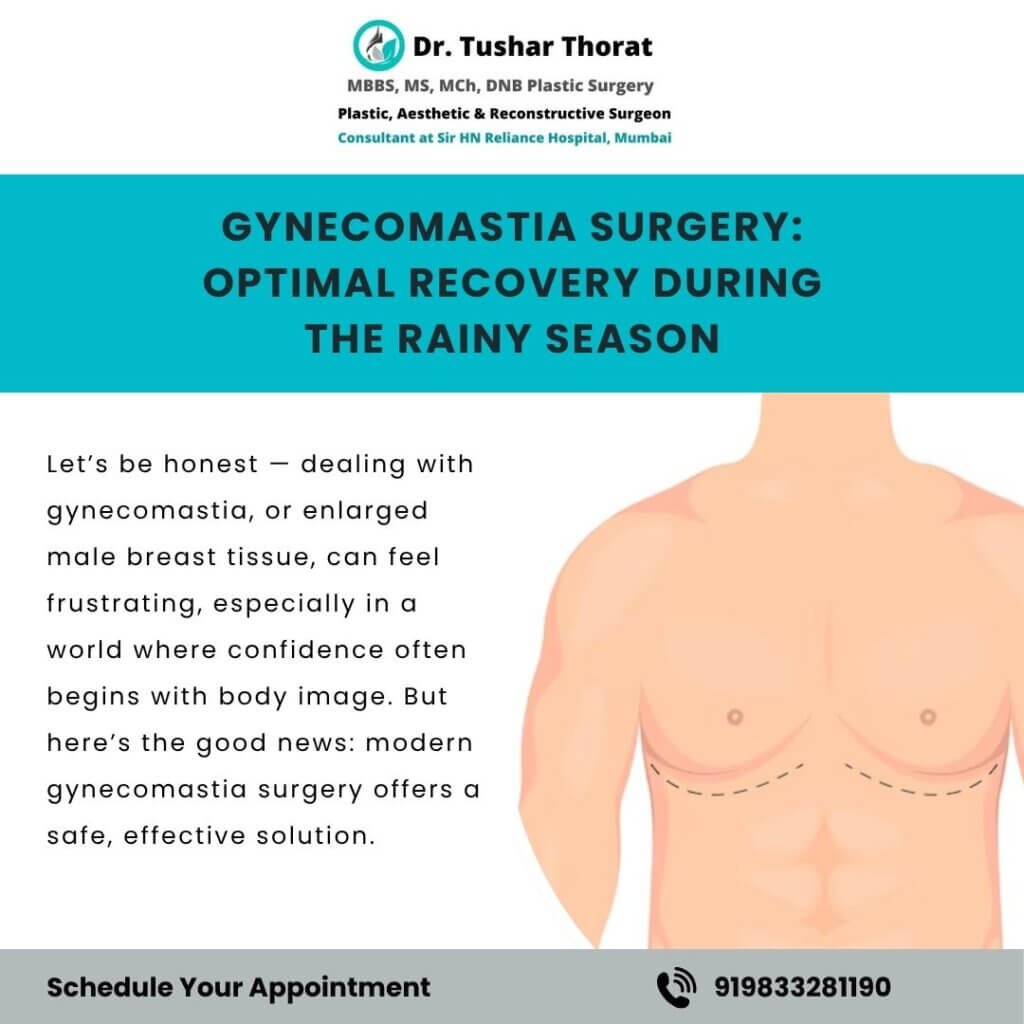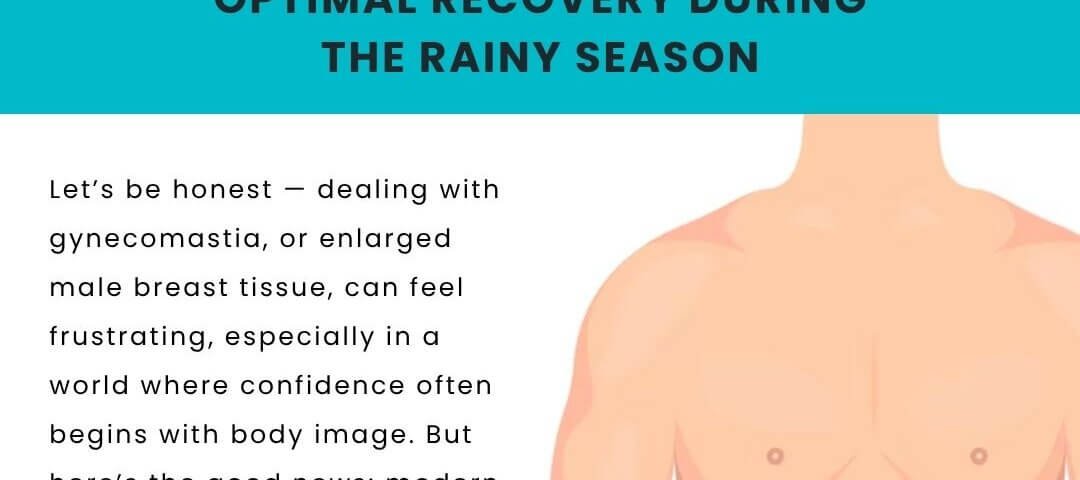Let’s be honest — dealing with gynecomastia, or enlarged male breast tissue, can feel frustrating, especially in a world where confidence often begins with body image. But here’s the good news: modern gynecomastia surgery offers a safe, effective solution.
And what better time to recover discreetly than during the rainy season?
If you’ve been postponing your treatment, this blog walks you through why monsoon is the ideal time for gynecomastia surgery, how to take care of yourself during recovery, and what kind of results to expect.

What Is Gynecomastia Surgery?
Gynecomastia surgery, also called male breast reduction, involves the removal of excess glandular tissue and/or fat from the chest area to restore a flatter, firmer, more masculine contour.
Common causes of gynecomastia include:
- Hormonal changes
- Genetics
- Steroid or medication use
- Weight fluctuations
The surgery is typically a day-care procedure, often performed under local or general anesthesia with minimal downtime.
Why Monsoon Is a Smart Time for Male Chest Contouring
1. Cooler Weather = Comfortable Healing
Post-surgery, patients need to wear compression garments for support. Mumbai’s cooler monsoon temperatures make this more bearable, compared to sweaty summers.
2. Fewer Outdoor Commitments
Monsoon means fewer beach days, gym sessions, or weddings. You can rest indoors without feeling like you’re missing out.
3. Discreet Recovery
Because people are dressed in layers and mostly indoors, it’s easier to heal privately, without drawing attention to your recovery period.
4. Easy Scheduling
Doctors usually have more flexibility in appointments post-summer, helping you pick the ideal date and recovery plan.
What to Expect from the Procedure
- Takes around 60–90 minutes
- Performed via small incisions, often around the areola
- Glandular tissue and/or fat is removed
- Minimal scarring with modern techniques
- You’ll wear a compression vest for 3–4 weeks
- Results are visible almost immediately and improve over time
Monsoon Recovery Tips for Gynecomastia Surgery
Keep the Area Dry
Humidity can lead to sweat buildup, which may irritate healing incisions. Change garments regularly and keep skin clean.
Choose Breathable, Cotton Clothes
They help absorb sweat and reduce friction under the arms and chest area.
Avoid Getting Drenched
A wet compression garment can trap moisture and promote infection. If you must step out, carry an umbrella, and wear waterproof outer layers.
Take Time to Rest
Let the rains be your cue to take it slow. Skip intense workouts and lifting for at least 2–3 weeks.
Eat Light and Hydrating Foods
Soups, seasonal fruits, and warm meals help your body heal better and keep post-op bloating in check.
FAQs: Common Questions About Monsoon Surgery
Q. Will humidity affect healing?
If you maintain hygiene and keep the area dry, healing during monsoon is just as effective — sometimes even better due to cooler weather.
Q. Can I go to work during recovery?
Yes, most men return to desk jobs within 3–5 days, but avoid physical labor for 2–3 weeks.
Q. Are the results permanent?
Yes. Once glandular tissue is removed, it doesn’t grow back — but maintaining a healthy weight is key to long-term results.
Q. Is the compression vest visible under clothes?
Not usually. It’s thin and designed to be worn discreetly under shirts.
Conclusion: Monsoon Is the Season for Self-Care
While the rains are washing the city clean, this might just be the perfect time to clear your mind and take care of your body too.
Gynecomastia surgery is a life-changing, confidence-boosting procedure — and when done during monsoon, the entire recovery can feel easier and more private.
If you’re ready to stop hiding behind baggy clothes and start feeling like your best self, now is the time.
Consult Dr. Tushar Thorat – Mumbai’s Trusted Cosmetic Surgeon
Dr. Tushar Thorat | Cosmetic & Reconstructive Surgeon – Mumbai
Book an consultation now!





